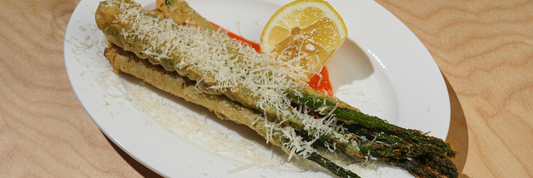Plastic bottle recycling has become a crucial practice, offering a multitude of environmental benefits. However, many people are unaware of the following facts about this process. Join us in exploring these insights in today's article.
- Understanding Right Recycling Symbols
- 4 Things About Recycled Paper Straws that Coffee Shop Should Know
- Things about Coffee Bags that Your Cafeteria Needs to Know
Most plastic bottles are recyclable
Most types of plastic bottles are made from one of two main types of plastic:
- PET (Polyethylene terephthalate): This type of plastic is marked with the number 1 in the recycling symbol and is commonly used for water bottles, fruit juice bottles, and other beverages. PET is considered the easiest type of plastic to recycle due to its durability and heat resistance.
- HDPE (High-density polyethylene): This type of plastic is marked with the number 2 in the recycling symbol and is often used for milk bottles, detergents, and personal care products. HDPE is also relatively easy to recycle.
These types of plastic can all be recycled into new products. The recycling process involves collecting, sorting, cleaning, shredding, and finally remaking into new products such as new bottles, polyester fibers, and floor tiles, etc.
Only 27% of plastic bottles are recycled globally
While most types of plastic can be recycled, the actual global recycling rate is only around 27% due to several key factors:
- Recycling Infrastructure: Many regions lack efficient plastic bottle collection and sorting systems, resulting in a significant number of plastic bottles not being properly collected. The lack of modern recycling facilities and efficient recycling processes hinders the recycling of plastic bottles.
- Contamination: Plastic bottles contaminated with food, grease, or other contaminants can damage other materials in the recycling process, rendering them unusable. Consumer failure to clean plastic bottles before recycling also contributes to contamination.
- Material mixtures: Some plastic bottles have caps, labels, or other components made from different materials, making recycling difficult. Separating these components is costly and time-consuming, making recycling less efficient.
- Economic factors: In some cases, producing new plastic can be cheaper than recycling old plastic due to fluctuating oil prices and high recycling costs. This can impact investment decisions in recycling facilities and advanced recycling technologies.
- Lack of awareness: Some consumers are not fully aware of the importance of recycling plastic bottles and how to recycle them properly. The lack of information and education about recycling can lead to improper disposal of plastic bottles, reducing recycling rates.
- Consumer market: The demand for recycled products from plastic bottles is not yet high, affecting the economic viability of recycling. Developing a market for recycled products from plastic bottles is crucial to promoting recycling

Recycled bottles use 75% less energy to produce than new ones
Recycled bottles require around 75% less energy to produce compared to virgin plastic bottles by avoiding these energy-intensive steps, cụ thể:
- No need for raw material extraction: Virgin plastic production starts with extracting fossil fuels like oil and natural gas. This process requires significant energy for drilling, transportation, and processing. Recycling bypasses this entirely, using existing plastic as the raw material.
- Less processing required: Virgin plastic goes through a complex refining and polymerization process to create usable plastic pellets. Recycled plastic already exists in a usable form, needing only cleaning, melting, and shaping into new bottles. This eliminates a major energy-intensive step.
- Reheating vs remelting: Virgin plastic production requires intense heat to melt and shape the raw materials. Recycled plastic, however, needs to be heated only enough to melt it for reshaping, a significantly lower energy demand.
- Reduced transportation: Extracting and transporting raw materials for virgin plastic often involves long distances. Recycled plastic, often collected locally, requires less transportation, further reducing energy consumption.
Overall, by choosing recycled plastic bottles, you're not just reducing plastic waste, you're also making a more energy-efficient choice!
Recycled plastic bottles can be used to make a variety of new products
Recycled plastic bottles have a surprisingly wide range of applications, being used for a variety of purposes. Here are some examples of what recycled plastic bottles can be transformed into:
- Clothing: Recycled plastic bottles can be melted down and spun into fibers, which can then be used to make clothing. This is a sustainable alternative to using virgin materials, and it helps to reduce the amount of plastic waste that ends up in landfills. Here is how plastic bottles recycled into polyester.
- Furniture: Recycled plastic bottles can be used to make a variety of furniture items, including chairs, tables, and benches. This is a durable and weather-resistant option for outdoor furniture, and it helps to give new life to old plastic bottles.
- Building materials: Recycled plastic bottles can be used to make a variety of building materials, including bricks, tiles, and roofing materials. This is a sustainable and cost-effective alternative to using traditional materials, and it helps to reduce the amount of plastic waste that ends up in landfills.
- Car parts: Recycled plastic bottles can be used to make a variety of car parts, including bumpers, dashboards, and interior panels. This is a lightweight and durable option for car manufacturers, and it helps to reduce the amount of plastic waste that ends up in landfills.
- Other products: Recycled plastic bottles can be used to make a variety of other products, including toys, utensils, and food containers. This is a creative and sustainable way to reuse old plastic bottles, and it helps to reduce the amount of plastic waste that ends up in landfills.
Recycling Plastic Bottles Has Limitations
While recycling plastic bottles is a valuable practice, it's important to recognize its limitations. Here are the key reasons why infinite recycling is not possible:
- Degradation with each cycle: During the recycling process, plastic molecules break down slightly each time they're melted and reformed. This weakens the overall quality of the recycled plastic. After several recycling cycles (typically 2-3), the plastic becomes unsuitable for high-quality applications like food containers and needs to be "downcycled" into products with lower quality requirements, like fleece jackets or carpet fibers.
- Challenges with mixed materials: Some plastic bottles have components like caps or labels made from different plastics. Separating these materials during recycling can be difficult and expensive. If not properly separated, these mixed materials can contaminate the entire batch of recycled plastic, rendering it unusable.
- Economic factors: In some cases, virgin plastic (newly produced) can be cheaper than recycled plastic due to various factors like oil prices and processing costs. This can make recycled plastic less commercially attractive for some manufacturers.
In conclusion, we've delved into the world of recycling bottles, uncovering fascinating facts and exploring the limitations of this valuable practice. While recycled bottles offer a multitude of benefits and versatile applications, it's crucial to acknowledge the challenges that come with their production and recycling processes.




